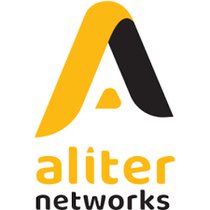The ecological footprint of our digital life is growing quickly (currently around 5% of global CO2 emissions). Think of energy-consuming data centers, piles of e-waste, and rare earth mines poisoning landscapes from Congo to China. In particular, the Amsterdam Metropolitan Area is a major IT consumer, where 74% of the multi-tenant data centers in the Netherlands are located.
E-waste
The environmental impact of IT hardware is generated mainly in the production phase of the equipment. That’s why circular strategies like repair, reuse, and refurbishment of hardware are essential to minimize the footprint of digitization. Laptops, smartphones, and servers are energy-intensive products. Loaded with high-tech components full of gold, silver, and copper, these products lock in scarce metals like antimony, germanium, and beryllium whose extraction produces tons of CO2 and other forms of pollution – yet which have recycling rates close to zero. Radical lifetime extension is the best way forward.
This project combines partners' expertise in science and industry to develop a Circular Resource Planning system for IT. The RePlanIT-system will enable IT users, purchasers, and facility managers to make better, faster, and science-based decisions to improve the sustainability of their IT environment and double the lifetime of the hardware. It will be tested in Field Labs at the Amsterdam Municipality and other organizations.
“We think of digitization as something taking place in a purely virtual world. Yet all these datacenters surrounding Amsterdam remind us just how physical IT really is. These concrete blocks containing nothing but racks filled with high-tech hardware, wrestling shoulder to shoulder with residential buildings, taking up space and increasing our carbon footprint.”
Joppe van Driel
Program Developer
Double the lifetime of IT products
The aim of the project is to develop and test a new methodology, Circular Resource Planning for IT. It should enable suppliers and users of IT services to manage their hardware in a circular way. In practice this means: double the lifetime of the equipment, slowing down replacement cycles, while running the hardware on maximum energy efficiency.
Picture by Vecteezy
Love to go circular, but don’t know-how
We focus on the B2B market, which represents the biggest market share in the IT sector (about 55%, and for the data center industry 100%). Those responsible for purchasing, supply, maintenance, and e-waste disposal are eager to implement circular strategies. However, they lack real-time decision support systems to make this step while feeling confident that the IT system remains reliable and fast.
To accelerate circularity for IT, we will build and test decision support modules:
- Circular product passport for IT hardware: stores information about the material composition, measures the performance of the equipment during use and correlates changing performance with usage conditions. The technical challenge lies in the development of a passport that discloses information on three levels – raw materials, products, and IT-system. Circular passports usually focus only on the raw materials used. This works well for buildings, which normally contain only a few different kinds of materials (e.g. concrete, steel, wood). Electronic products, however, contain a great variety of (sub)components integrating exotic materials in very small quantities.
- Resource planner: generates optimization strategies for repair and refurbishment. Data from the circular product passport will form the basis. The resource planner uses AI and IoT to predict the need and timing of maintenance, and determine the remaining technical lifetime of components in the case of refurbishment.
- Resource configurator: this allows IT managers to match the supply and demand of hardware components in a circular way. The resource configurator (a) generates an up-to-date overview of the remaining lifetime and planned upgrades of the hardware assets, and (b) predicts what re-usable hardware components are available where and when to match supply and demand.
Picture by Vecteezy
To build this system, the project brings together industrial design, computer science, and behavioral science:
- How can we harvest and record information about material composition, environmental impact, hardware design, value retention, and other indicators?
- How can we use IoT and AI to predict the need and timing of maintenance, and the best refurbishment strategies of hardware (parts harvesting, upgrade forecasting)?
- How can we influence the behavior and acceptance of circular IT solutions in the B2B market?
- What opportunities and threats do decision-makers and end-users see with regard to various circular solutions for ICT hardware?
Testing prototypes in real life
The result of the project is, firstly, a prototype of the RePlanIT system that is developed and validated in practical real-life environments in the municipality of Amsterdam and other big IT consumers in the business market. Secondly, with the research into preconditions for trust, behavior, and acceptance of circular IT, the project provides insight into how to include stakeholders so that they actually make circular choices.
| Duration: |
|
| Related Information: |
Principal Investigators
Project members
Partners













